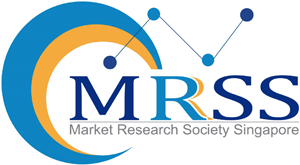By Julia Shisgal
The practical implications of neuroscience on marketing seem to have a unique appeal in the ability to illustrate hidden processes (via brain imaging, biometrics, and other implicit measures). After all, humans are frequently dubbed as social animals, and part of that social belonging is the need to understand others.
The promises of neuromarketing (i.e., uncovering what makes people “tick”) have often been heralded as:
“The next big thing in marketing research”, and “meant to blow away all that silly post rationalized nonsense (both quant and qual) that masquerades as consumer insights” (Nosworthy, 2011; Penn, 2011).
Where does neuroscience sit within market research?
The Predictive Markets study at the ESOMAR Annual Congress in Athens (2010) demonstrated a significant divide regarding acceptance of neuromarketing techniques—wherein half the audience felt this field “would grow in importance in the future” as the other half believed it would deteriorate (Nosworthy, 2011).
The objective of this two part article is to restore confidence in neuroscience methods to market research and neuromarketing. We will do this over two parts:
- Looking at the tools and timelines of neuroscience
- A case study of neuroscience methods in practice
Just as we have seen the merging of quali-quant research methods in recent years, so too is the trend for neuroscience as an integrated approach to traditional market research—rather than a standalone approach. I am optimistic for a future where the acceptance of neural metrics is significant to the extent of a collaborative research atmosphere between the methodologies.
However, despite the practical insights that can be gleamed from neuroscience, this is an approach to be used with caution. We need to get better at separating fact from fiction, and moreover to separate sound science from pseudoscience. Diana Lucaci, Canadian Chair of the Neuromarketing Science and Business Association (NMSBA) and CEO of True Impact (a consumer neuroscience research and consulting firm), has expressed:
“As marketers, we know people are more likely to act on how they feel than what they say. Quantifying feelings is the first step toward tying it to revenue and ROI, however, not all methods and technologies are created equal. Measuring brain and body activity correctly is critical to having data our business leaders can rely on.”
The belief that consumers are willing to invest when a trusted brand (such as Lego) extends itself into new areas is a reason more and more brands are building universes around their key products. For instance, Universal is launching its Movie Monsters universe with this summer’s re-launch of the The Mummy. At the same time, brands like Hasbro, Call of Duty, and even Hanna-Barbera are all speculating about how they might build distinct universes of their own.
The Tools of Neuroscience
According to neuroscience over “90% of all decisions are made at a subconscious level” (“Research Technology, n.d.). Therefore, it’s imperative for market researchers to start considering methods that measure subconscious responses.
Looking at the market research industry as a whole, we already have methods in our toolbox that:
- Look at explicit measures (via quantitative analysis of opinions, attitudes, and behavioral observations, etc.)
- Infer implicit motivation (via qualitative approaches such as in-depth interviews, focus groups, etc.)
Although each methodology has its own merits and challenges, the next logical step is to expand the researcher’s toolbox to include a method that directly measures the subconscious.
The Timelines of Neuroscience
For starters, many are afraid of the “novelty” of this approach. This often results from a lack of knowledge about the history of neuroscience and how this method approaches consumer research.
It’s important to recognize that the standard neuroscience (i.e., physiological) measures have been around for quite some time. For example, the first ever recorded human measure of brain waves via EEG was done in 1924 by German psychiatrist Hans Berger. Shortly thereafter the first non-intrusive eye tracker was built by Guy Thomas Buswell (“History of Neuromarketing”, n.d.). But it wasn’t until the 1990’s, that companies such as Coca Cola and Ford pioneered neurotechnology centers to conduct their own market research studies. Furthermore, in the early 2000’s market research giants such as Nielsen began to invest in neuromarketing, and the term “neuromarketing” was officially included in the Collins dictionary in 2005 (“History of Neuromarketing”, n.d.).
Now, over a decade later applied consumer neuroscience is slowly starting to gain traction…and not always in a positive sense. Some companies claiming to sell neuromarketing services are not based on neuroscience at all. While the signals generated from the brain can deliver more objective insights into the thoughts and feelings of consumers, conducing due diligence is still critical to ensuring that research results are valid, reliable, and scientifically sound (Hammou, Galib, & Melloul, 2013).
Putting It All Together
Applied neuroscience has been proven to be an insightful market research tool when utilized to answer certain types of questions. Although any one research tool can be great, the potential of intensifying the methodological mix in market research (with qualitative, quantitative, and neuroscience methods) aims to bridge the gap between the limitations of any one particular method and provides us with a bigger and more cohesive picture of people’s feelings and motivations behind purchase intent. We will discuss this in action in our next article.
By Julia Shisgal,
Quantability
Article reproduced with permission of RW Connect and ESOMAR.
Source: https://rwconnect.esomar.org/neuroscience-completes-the-big-picture/

